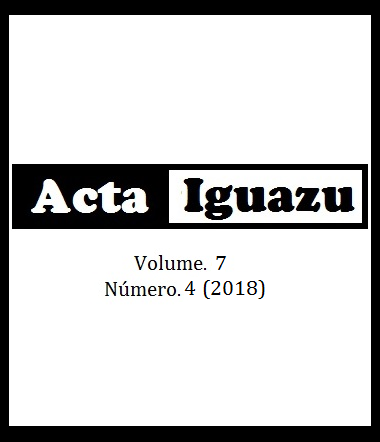INCORPORATION OF SUGARCANE BAGASSE ASH WITHOUT MILLING IN CONCRETE IN DIFFERENT DOSAGES
DOI:
https://doi.org/10.48075/actaiguaz.v7i4.16591
Supporting Agencies
Keywords:
resistência à compressão, concreto ecológico, cimento PortlandAbstract
In the burning process of sugarcane bagasse, the creation of ashes occurs, which are later allocated in large courtyards. The correct destination of this residue is of great environmental importance. Sugarcane bagasse ash (SCBA) is predominantly composed of silicon dioxide, that due to their physical-chemical characteristics provide pozzolanic properties to the material. Thus, it is hypothesized that it can be used as a raw material in the partial replacement of Portland cement for the mortars and concretes production. The present study aimed to evaluate the concrete characteristics with addition of SCBA in partial replacement of Portland cement in different dosages. Tests were carried out without addition and with replacement of 10, 20 and 50% of cement mass by SCBA. The results indicate that the resistance to simple compression is modified when the treatments with different dosages are compared. The 10 and 20% replacement of the cement mass by SCBA, presented resistance values to compression above 14 MPa, being statistically equal. Therefore, it is concluded that there is technical feasibility for cement replacement by SCBA in concrete.Downloads
Additional Files
Published
25-01-2019
How to Cite
VIEIRA NETO, J. G.; ORIOLI DOS SANTOS, A. R.; WACHHOLZ DE SOUZA, C. H. INCORPORATION OF SUGARCANE BAGASSE ASH WITHOUT MILLING IN CONCRETE IN DIFFERENT DOSAGES. Acta Iguazu, [S. l.], v. 7, n. 4, p. 85–93, 2019. DOI: 10.48075/actaiguaz.v7i4.16591. Disponível em: https://saber.unioeste.br/index.php/actaiguazu/article/view/16591. Acesso em: 3 dec. 2025.
Issue
Section
ARTIGOS CIENTÍFICOS
License
Aviso de Direito Autoral Creative Commons
Política para Periódicos de Acesso Livre
Autores que publicam nesta revista concordam com os seguintes termos:
1. Autores mantém os direitos autorais e concedem à revista o direito de primeira publicação, com o trabalho simultaneamente licenciado sob a Licença Creative Commons Attribution que permite o compartilhamento do trabalho com reconhecimento da autoria e publicação inicial nesta revista.2. Autores têm autorização para assumir contratos adicionais separadamente, para distribuição não-exclusiva da versão do trabalho publicada nesta revista (ex.: publicar em repositório institucional ou como capítulo de livro), com reconhecimento de autoria e publicação inicial nesta revista.
3. Autores têm permissão e são estimulados a publicar e distribuir seu trabalho online (ex.: em repositórios institucionais ou na sua página pessoal) a qualquer ponto antes ou durante o processo editorial, já que isso pode gerar alterações produtivas, bem como aumentar o impacto e a citação do trabalho publicado (Veja O Efeito do Acesso Livre).
Licença Creative Commons
Esta obra está licenciada com uma Licença Creative Commons Atribuição-NãoComercial-CompartilhaIgual 4.0 Internacional, o que permite compartilhar, copiar, distribuir, exibir, reproduzir, a totalidade ou partes desde que não tenha objetivo comercial e sejam citados os autores e a fonte.


